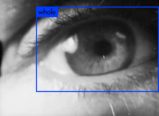Dear Shaded Viewers,
This morning, I had the privilege of previewing Le Monde selon l’IA at the Jeu de Paume and engaging directly with some of the remarkable artists behind its featured works. This rare opportunity offered not only a first look at this ambitious exhibition but also a chance to hear firsthand about the inspirations, challenges, and critical questions that drive their exploration of artificial intelligence as both a tool and a subject in contemporary art.
Le Monde selon l’IA at the Jeu de Paume, is an ambitious and thought-provoking exhibition that delves into the intersection of artificial intelligence (AI) and contemporary art. Running from April 11 to September 21, 2025, this event promises to be a groundbreaking exploration of how AI reshapes artistic creation and challenges our perceptions of creativity, ethics, and the environment.
Artificial intelligence, once a concept confined to science fiction, has become a transformative force in society. From generating images and music to analyzing vast datasets, AI now plays a pivotal role in shaping our cultural landscape. This exhibition distinguishes between two major branches of AI: analytical AI, which powers facial recognition and computer vision, and generative AI, capable of creating original texts, images, sounds, and videos. Through these technologies, artists are redefining what it means to create—blurring the lines between human ingenuity and machine-driven innovation.
Among the featured works are Trevor Paglen’s Faces of ImageNet, which exposes the biases inherent in algorithmic classification systems, and Kate Crawford and Vladan Joler’s Calculating Empires, a historical reflection on the technological developments leading to modern AI. These pieces not only showcase the capabilities of AI but also provoke critical discussions about its societal implications.
The exhibition strikes a delicate balance between awe at AI’s creative potential and concern over its ethical ramifications. As visitors navigate through sculptures, digital installations, videos, and “time capsules” that trace the historical roots of AI technologies, they are invited to reflect on pressing issues such as privacy, surveillance, discrimination, and environmental impact. Artists like Hito Steyerl critique the socio-political dimensions of AI systems, while Christian Marclay tests their ability to produce audiovisual compositions that rival human artistry.
This duality—fascination with innovation versus apprehension about its consequences—is central to Le Monde selon l’IA. The exhibition avoids technophilic optimism while steering clear of nostalgic technophobia. Instead, it offers a nuanced perspective on how these machines influence our visual and sensory engagement with the world.
Curated by Antonio Somaini alongside Ada Ackerman, Alexandre Gefen, and Pia Viewing, this immersive experience is not just for art enthusiasts but also for those intrigued by technological evolution. The inclusion of historical “capsules” underscores how humanity’s relationship with automation has evolved over centuries, reminding visitors that today’s debates around AI are rooted in longstanding cultural and philosophical questions.
Ultimately, Le Monde selon l’IA challenges us to consider what lies ahead. How will these systems redefine artistic expression? Can machines ever truly replicate human creativity? And what responsibilities come with wielding such powerful tools?
Whether you approach this exhibition as an artist seeking inspiration or as a skeptic questioning the role of technology in society, Le Monde selon l’IA offers a rare opportunity to engage critically with one of the most transformative phenomena of our time. The Jeu de Paume invites us all to step into this evolving narrative—one where art meets algorithm and humanity confronts its digital mirror.
The dialogue will continue long after you exit the gallery doors.
Later,
Diane

















![2 Erik Bullot cinéma_vivant_[11] 2024](https://ashadedviewonfashion.com/wp-content/uploads/2025/04/ashadedviewonfashion.com-auto-draft-2-erik-bullot-cinema-vivant-11-2024-159x131.jpg)
